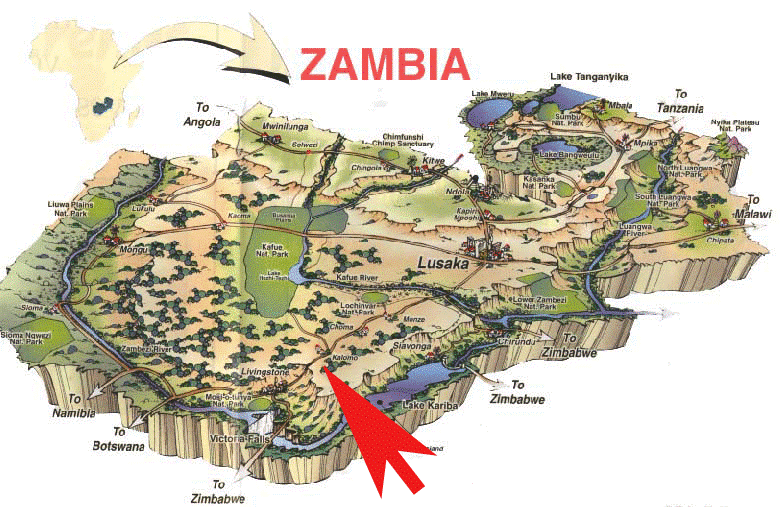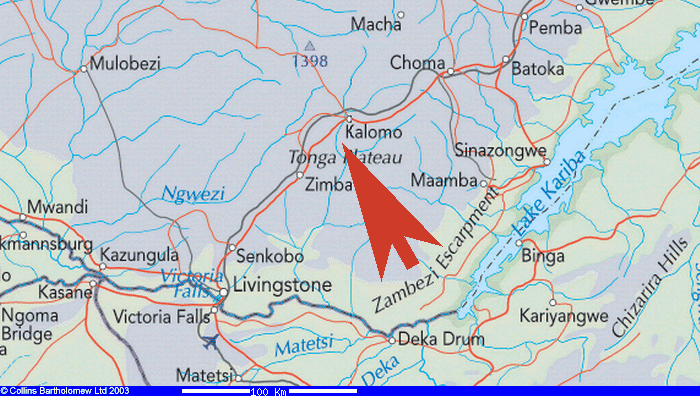Malnutrition
The Virtual Doctors Work
Earlier this year virtual doctors had a big expansion, taking on new districts and supporting more clinical officers. This month’s case is from one of these new districts, Kalomo.
Kalomo district lies in southern Zambia in the Southern province. The capital Kalomo lies about 126km north east of Livingstone and on the main railway line to Lusaka. It is the home of the Batonga people. Travelling 3 km north of Kalomo you will find a slightly raised mound. This is known as Kalundu mound and marks the site of an Iron-Age village. Archaeologists believe that it may have been occupied from as early as the 4th century although they are more certain that it was full of people from the 9th century-14th century. The Kalomo culture dates back to 800-1300 CE. The Kalomo people were semi-nomadic agriculturalists and hunter-gatherers who existed for approximately five hundred years. The first Kalomo culture settlements originated on the Batoka Plateau. Currently the population of Kalomo district is around 190,000 people.
Kalomo was the first capital of Zambia in 1908 but gave way first to Livingstone and then Livingstone to Lusaka in the 1930s. In the early 1900s the railway line enabled access to the copper mines of the north and the tourist centre of Livingstone to the south. The land was cultivated, maize and tobacco farms sprung up as well as cattle ranches. Kalomo continues to be a large commercial farming area today and forms part of the bread basket of Zambia.
Popular with adventurers, Kalomo is a wonderful area to explore with its rich history and natural beauty. Kafue National Park, which extends into 3 provinces including the southern province, can be reached seasonally by dirt roads from Kalomo. Kafue National Park is the second biggest park in Africa with over 55 mammal species as well as a huge number of other wildlife.
Spurwing Geese
Blue Wildebeast (Kafue national park)
Virtual Doctors Support 8 Rural Health centres and Kalomo Hospital in Kalomo District.
The hospital clinics see many patients a day and this was no exception. A 1 year 8 month old child was brought to Kalomo hospital by her mother with a 2 month history of weight loss, swelling of legs and a generalised skin rash. She also had developed diarrhoea over last 3 days. The child was severely underweight. On examination the clinical officer reported a generalised hypo-pigmented flaky skin rash, so this was a rash over the whole body which was paler than her normal skin; pitting oedema in both legs (swelling of both legs) and sunken eyes. She had a slightly fast heart rate but no temperature. Blood tests showed her to be anaemic with a raised creatinine (creatinine is a normal waste product that is filtered through the kidneys). The diagnosis was severe acute malnutrition with dehydration.
The Clinical Officer wanted advice on how to rehydrate the child and how much fluid was safe to give in a case of severe acute malnutrition like this to avoid making the child more unwell. The volunteer Paediatrician took advice from a colleague with knowledge and experience of managing malnutrition and advised the following: That it if possible to refeed the child by mouth or by passing a tube from the nose to the stomach (a naso-gastric tube)as this is safer than IV (intravenous) fluids. For feed (if available) give a peanut based feed like Plumpy nuts, but if not to give a milk formula or a rehydration fluid. The initial aim to give adequate daily (or maintenance) fluids without adding any extra for dehydration. She also asked the clinical officer to get back in touch for further guidance should the child be unable to feed orally and require intravenous fluids. She also attached a WHO document giving guidance for treating severely malnourished children.
What is Malnutrition?
Malnutrition is a serious condition occurring when a person’s diet does not contain the right amount of nutrients. In this case we are talking about undernutrition that is to say insufficient intake of energy foods, proteins, and micronutrients. Energy and protein malnutrition can manifest clinically as marasmus, kwashiorkor and marasmic-kwashioror. The current World Health Organisation (WHO) guidelines, however, give these a blanket term of “severe acute malnutrition” with or without medical complications.
Why is it important?
Undernutrition contributes to nearly 45% of under 5 year olds’ deaths globally. Children with moderate to severe acute malnutrition have a 3-9 times higher mortality than well nourished children. A report by the WHO on nutrition in the African regions found:”that undernutrition is still persistent in the WHO African Region, with major implications for health, particularly among poor and vulnerable population groups. Twenty five of the Region’s 47 countries have high (>30%) or very high (>40%) rates of stunting. In fact, analysis of trends shows that these rates are rising, instead of falling so as to meet the target of reducing the number of stunted children by 40%. Only 17 countries have “acceptable” levels of wasting (<5%). It seems clear that persistent drought, famine, flooding, and civil crises will make it difficult for many countries to achieve the target of reducing and maintaining wasting at less.”
What Causes Malnutrition?
Malnutrition results from hunger, disease or both. So an inadequate diet or problems absorbing nutrients from the diet. It is associated with rapid weight loss or failure to gain weight and grow in the case of children (failure to thrive). There may be changes in behaviour irritability, sluggishness, sleepiness; changes in hair and skin colour. There may also be swelling (oedema) of both feet.
Special guidelines have been developed because there are profound physiological and metabolic (how the body works at the cell level) changes that occur in a severely malnourished child. These affect every cell, organ and system of the body. This means these children do not respond to treatment in the same way as a well- nourished child would. They are more likely to die or have complications than those that are healthy.
Assessment
Assessment is carried out using, what are called, anthropometric measures in children under 5 years of age. These are measurements compared to those who are well nourished and gives an idea of how severely the child is malnourished. They are as follows:
1. Weight relative to height plotted on WHO standard growth charts.
2. Mid-upper arm circumference measured in mm and compared to the expected values.
3. Bilateral pitting oedema (swollen feet) this is assessed by applying when normal thumb pressure on top of feet for 10 seconds leaves an indentation.
There are some other assessments too for example checking appetite and looking for any signs of infection or possible causes.
Treatment
Treating severely malnourished children is fraught with difficulties as refeeding itself can lead to worsening of the patient’s condition, leading to diarrhoea, poor appetite, slow recovery and high mortality (risk of death). A fantastic book by Ann Ashworth and her co-authors for the WHO explains in detail the general principles of treatment, of how to treat emergencies and what to expect and what signs to look out for in improvement and signs of deterioration.
It divides the care up into sections giving practical guidance.
The care is given in 10 essential steps which cover a stabilisation phase where acute medical conditions are managed and then a longer rehabilitation phase.
The initial steps involve stabilising the child’s blood sugar, body temperature and treating dehydration. It is important to use Rehydration Solution for Malnutrition (ReSoMal) as standard oral rehydration salts may contain too much sodium and too little potassium.
The next steps involve treating/preventing infection with a broad covering antibiotic and possibly also treating any specifically identified infections eg malaria, parasitic worms, skin problems secondary to zinc deficiencies or TB.
Micronutrient deficiencies (vitamins and minerals) need to be tackled. Vitamin A is given from day 1 and then a multivitamin, folic acid, zinc and copper. Iron is NOT given to start with despite anaemia being common. Giving iron can make infections much worse, better to wait until the child begins to gain weight.
Then start cautious feeding. There are some specific milk-based formulas that are recommended with a chart to calculate how much to give.
The next step is moving into the rehabilitation stage to achieve catch up growth with vigorous feeding with high calorific foods.
They highlight the importance of caring for the child’s mental and behavioural well being too as in a malnourished child these will be delayed. It is important to provide tender loving care, a cheerful and stimulating environment with play and physical activity when well enough and involve parents in care as much as possible.
When the child is well enough they can be discharged home with guidance on feeding and play therapy and they will need regular follow up. It is very important that they receive booster immunisations and vitamin A every 6 months.
Disclaimer: This article is for information only and shouldn’t be used for diagnosis or treatment of medical conditions. If you have any concerns about your health consult a doctor or other health professional.







